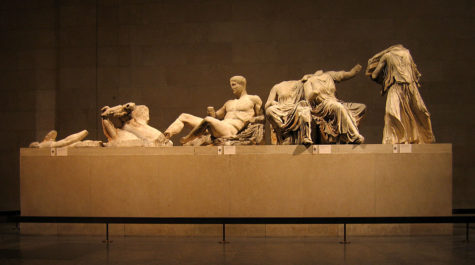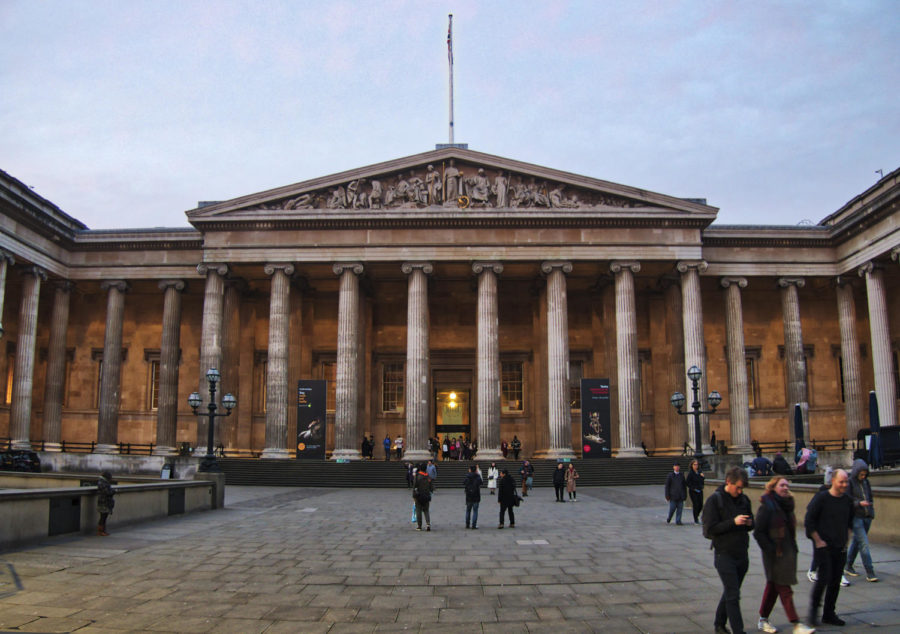Museums and Stolen Artifacts
British Museum / Flickr / CC BY-NC 2.0
Museums are visited by thousands of people every year. This British Museum is one of many museums one can find.
Twenty-four percent of the U.S. population have visited a museum or an art gallery. The number of people seems to increase each year.

One of the most famous exhibits in the British Museum in London, marbles from the Parthenon in Athens that were traded to a British nobleman during the Ottoman Empire’s rule of Greece in the early 1800s, have been kept from being returned to Greece. Greece claims that the marbles should be returned because they were stolen under questionable circumstances. Despite that, British Prime Minister Boris Johnson said otherwise.
Freshman Jacqueline Hernandez agrees with Johnson’s stance.
“As long as museums are respectful of artifacts and take good care of them, I don’t see the problem with letting the public see them,” Hernandez said. “It’s important for us to look back on history.”
Past executive director at the Cass County Historical Society Bryan Looker disagrees with Johnson.
“Colonial empires such as Britain plundered locations across the globe, most famously in Egypt, to fill their London museums,” said Looker. “Within the last twenty years or so, many of these museums have begun returning stolen objects to the nation of origin. There won’t be justice, however, until all the objects have been returned.”
Many museum curators argue that these objects shouldn’t be returned if appropriate safety and preservation of the objects cannot be ensured. The bigger worry though is that private businesses and institutions will miss out on profitable business prospects due to the loss of artifacts.
According to an estimate in a 2018 assessment commissioned by the French government, ninety percent of Africa’s material cultural history is currently housed in the West in significant museum collections.
“We all have reasons for our actions, but I feel like it is morally right to give the artifacts back to who they belong,” freshman Allison Miranda said.
It is consistent with fundamental property laws for stolen or plundered items to be given back to their rightful owners. Cultural artifacts are an essential component of modern cultural and political identity; they belong alongside the cultures that produced them.
“Our entire collection was acquired by either donations or a personal request for an object by the director, something that was significant to Cass County and may otherwise be lost or destroyed if not acquired,” Looker said. “The vast majority of the collection, however, came through donations by those from the community. Any acquisition otherwise is unacceptable and in many cases, criminal.”
Though not all museums are like this. Most frequently, museums acquire or borrow the objects they require for an exhibit. Although it might seem logical that borrowing would be less expensive than buying, this isn’t always the case in the world of museums.
Recent years have seen a greater push for the return of artwork and artifacts with questionable backgrounds, which experts credit to improvements in research methods, a spike in interest in Nazi-looted artwork, and a revived attention on the problem of racism and colonialism in the art world.
“I see why they would be angry, but the artifacts are in good hands for the most part,” Hernandez said. “I personally appreciate museums showing cultural pieces because it lets more people see and admire them.”
Your donation will support the student journalists of Logansport High School. Your contribution will allow us to purchase equipment and cover our annual website hosting costs.

Freshman Maddison Sell (all pronouns) is a reporter and a member of the class of 2026. She joined Magpie their freshman year (2022-23). One of his favorite...










